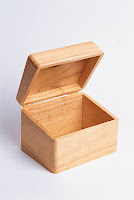Month: October 2012
-
I-N-S-P-I-R-A-T-I-O-N
I know the holidays are coming. I know. It’s easy to get excited about the holidays. But it’s also easy to get totally uninspired – the same tunes, year after year, to the same people (usually), for the same events, all in a time when you’re totally crushed with other obligations. It’s too easy to lose all inspiration. And that leads to boredom and cynicism – which start to show in your music.
So, how do you stay in the game? Keep it fresh? Spice it up? Relight the lamp? Here are five ways to get or stay inspired:1. Listening to music- yup, seems counterintuitive, but listening to music can help. For some people it will be listening to other presentations of holiday music for ideas and inspiration. For others, it will be listening to whatever is, for them, the antithesis of holiday music to break the mold – and maybe to get some fresh ideas to apply to the holiday tunes.
2. Reading – quotes, books, poems, letters – we end up playing the holiday standards, which all pretty much say the same thing. Read something with another message. Let that message wash over you and see how that might change how you tell the holiday stories with your music.
3. Smells/tastes – I know, me and food! But really, smelling “holiday” smells – cinnamon, nutmeg, cloves, pine, fires, cold – all can put you in a better frame of mind to re-approach your music – and leave a good taste in your mouth as well!
4. Beautiful scenery/ Fresh air – take a walk, enjoy the changing weather – all these will help you bring a new perspective to your music, your musicality, phrasing, arrangement, and presentation.
5. Breathe! Simply taking a few deep breaths will allow you to think, reassess your arrangements and playing – and its in the pauses that I find a lot of new ideas. Breathing is, after all, the basic definition of inspiration!Of course, you don’t have to wait for the holidays to apply these ideas – any time you need to break out and do something new or get inspired to change something old into new (kind of like replacing all the buttons on a coat – it’s basically the same but now it’s new again!).Enjoy! -
Holidays are coming
It’s that time again – the holidays are coming and whether you’re working or entertaining or playing in church, it is likely that you will be called upon to provide some music. So, what are you going to do?You could pretend like it won’t happen and wait until someone asks you to play – then you can panic and feel unprepared. OR you could start preparing now so that when the holidays come around you’re ready, unstressed, and confident. I don’t know about you, btu the second one sounds like the better idea.Most people panic because everyone knows the holiday tunes and will know if you make a mistake. There are a couple of ways around this –
1. Use a fake book (or play by ear) so you are not glued to the page and can relax while you’re playing.2. Play Christmas tunes people are not as familiar with – start with the one you’ve never heard and move (which are likely to form a small group) and then move on to the ones you only hear very infrequently if at all on the radio. This is also a good plan to assure that your listeners aren’t tired of the tune before you even start to play3. Keep up the rest of your repertoire. Rather than interspersing “regular” music into your holiday tunes, think of sprinkling your holidays music into your regular repertoire. Even the happiest elf (and those strong employees at the shops!) can take only so much Christmas music. This really reduces the burden on your learning.
4. Enjoy yourself – it’s the holidays (well it will be as soon as your work these tunes up!) so have some fun while you’re out there! -
Take a breath!
There are few things less inspiring than an air that has no – well – air! You hear them all the time – lifeless, soulless presentations of tunes that should make you feel something. But when it’s through, all you fell is relief that it’s over.

Which story are you telling – the rich full one or the one that needs some air?
Don’t let your airs be like that!1. Make it breathe – phrasing is not something only to be marked on classical scores and then forgotten. Phrasing is the breath in the music – make sure yours has some air! If you’re not sure where to put the phrasing, sing it (in the shower if you’re squeamish) – everywhere you need a breath – put one in the music!
2. Make it feel – airs are essentially a story. And while many are songs and therefore come prepackaged with a story, you can always tell your own story. Give it your take. And make sure your audience can tell what the story is!
3. Make it lifelike – in addition to breathing, the story needs to shine through and the audience has to know what you’re telling them – assure that your arrangement helps tell your story – make it minor when bad/sad/not great things are happening, make it major when happy/good things are going on and make it funky if it starts to get boring!
4. Make it live – when you’re arranging the tune, make it have a life, don’t just repeat it relentlessly. Put the arrangement together so that the story is supported – and be sure to bring your audience along for the whole tale.
Just these minor tweaks will make your airs breathtaking – and there’s nothing wrong with that!
-
Three great things that come from Getting Organized
I don’t know about you but when someone says, “Play something for me” my mind goes blank. I can’t think of a single tune I know. And if by some magic I think of a tune, I can’t remember how it goes. It’s as if that simple question throws a switch that leaves me unable to think!
This even happens when I’m practicing. I think, “Play something you haven’t played in a while”. Suddenly, I have absolutely no idea of any tunes I have ever learned. Ever.So, I came up with a method to help me practice more than the few tunes on my mental music stand. It’s not high tech, it’s not fancy, but it does work – so I thought I’d share it with you.
 I have a recipe box for 3 x 5 cards with alphabet dividers. For each tune I learn I write out the title on a card, and the key I tend to play it in (or the key I prefer – sometimes I remember to note why I like it in that key – it sounds better, it doesn’t require a lever change, etc.). If I’m smart I also include the first few notes (at least in TAB but the dots are helpful if I can put them on there) and what I like to play it with in a set.
I have a recipe box for 3 x 5 cards with alphabet dividers. For each tune I learn I write out the title on a card, and the key I tend to play it in (or the key I prefer – sometimes I remember to note why I like it in that key – it sounds better, it doesn’t require a lever change, etc.). If I’m smart I also include the first few notes (at least in TAB but the dots are helpful if I can put them on there) and what I like to play it with in a set.The cards are sorted in alphabetical order by title. To be honest they’re sorted in alphabetical order by what I call them (sometimes I think of the title in Gaelic not English, or vice versa). The point is to sort and store them so that I can find them.
In practice when I’m done working my exercises, learning what I’m working on, and polishing what needs shine, I close my eyes, reach into the box, pull out a card – and play that tune.There are three things that I find amazing about this:
- I know WAY more tunes than I think I do (since I never remember that I know them).
- I KNOW way more tunes than I think I do (since I can actually play them when I randomly pull them from the box) – and if they are rusty, that’s ok, they shine right up with just a little time.
- I know way more tunes than I THINK I do! It is a strong visual reminder of my progress and accomplishment as a harper – proof that I’m growing and developing – it’s very reassuring.
You don’t have to make 3 x 5 cards – you could make a spreadsheet, a list, a “job jar” – anything that helps you remember to play tunes you learned a long time ago but might have set aside. The random access also helps your stay fresh and enjoy the tunes. The mini-tune-up the tune gets when you have to give it a bit of a shake also helps improve your memory.
And hopefully you’ll enjoy amazing yourself!




